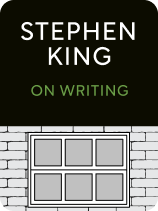

This article is an excerpt from the Shortform summary of "On Writing" by Stephen King. Shortform has the world's best summaries of books you should be reading.
Like this article? Sign up for a free trial here .
What is Stephen King’s toolbox? How can this writing toolbox help you become a better writer?
Stephen King’s toolbox is outlined in the book On Writing: A Memoir of The Craft. This writing toolbox helps you evaluate and build your skills.
Read more about Stephen King’s toolbox and how it can help improve your writing.
Stephen King: The Toolbox
On the mechanical level, writing is made up of words, sentences, and paragraphs. How you choose words, in what sequence you use them, and how you divide them all affect the quality of your writing.
In his memoir, Stephen King explains the toolbox like this. A writer is an artisan who has a number of tools in her toolbox available for use—diction, grammar, phrasing. You likely already have these tools, so don’t worry that you don’t understand them well enough to be a writer.
If you’re new to serious writing, examine each of these tools you have. If they’re rusty, clean them off. But don’t be embarrassed about the tools that you have; you likely have enough to start writing. And if you keep reading and writing without pause, as King recommends, you will polish your tools so that they do exactly what you want them to.
For dependable guidelines, look to The Elements of Style by Strunk and White.
Vocabulary and Diction
Diction is the choice of words you use in your writing. It draws from the vocabulary you have. According to Stephen King, the toolbox should include these fundamentals.
Don’t feel ashamed if you feel your vocabulary is weak. “It’s not how big it is; it’s how you use it.”
There is good writing of both extensive vocabulary and pedestrian vocabulary. Here are two examples:
“The leathery, undeteriorative, and almost indestructible quality was an inherent attribute of the thing’s form of organization, and pertained to some paleogean cycle of invertebrate evolution utterly beyond our powers of speculation.”—H. P. Lovecraft, At the Mountains of Madness
“The foundations of the Mansion House hotel stuck up above the ground. The stone was chipped and split by the fire. It was all that was left of the town of Seney.”—Ernest Hemingway, Big Two-Hearted River
The second passage uses mostly monosyllabic words. All of the words can be understood by a child. Yet Hemingway’s stories still communicate depth and truth.
So whatever vocabulary you have, use it unashamedly. Use whatever word comes first to your mind. Do not mull over your diction and conjure fancy words you wouldn’t ordinarily use. The first word that comes to mind is often the best one. Why would you use any other?
Grammar
Grammar consists of rules that we collectively agree to uphold to minimize confusion. If you disregard the rules of grammar, you risk confusing your reader. This is another concept in Stephen King’s toolbox.
The last time you really thought about grammar might have been in high school English. Don’t worry—the grammar you need is simple.
At its most basic, a complete sentence is made up of a subject (a noun) and a predicate (a verb). Rocks fall. Tom hovers. Trees explode. You can write as simply as this (Hemingway pretty much did).
From this baseline, you can construct more complicated sentences, with dependent and independent clauses, participial phrases, and so on. But when you get stuck, never forget that the minimum you need is a noun and a verb.
You can break grammar rules when they serve your purpose. For instance, you can write incomplete sentences to produce the rhythm you want to telepathically transmit to the reader.
Style
At the same time, you can follow grammar rules but produce poor writing. King has two glaring dislikes: passive tense and adverbs.
Avoid Passive Tense
Passive tense arranges words so that things are done to subjects. “The car was started by the driver.” “The discovery was announced with great fanfare.” “The meeting is scheduled for seven.”
All of these sentences sound weak. In active tense, the subject does the action. “The driver started the car.” “The grandmaster announced the discovery with great fanfare.” “The meeting’s at seven.” Don’t these sentences feel better?
This is common enough advice, but why do writers still use passive voice? Because it’s safe. Passive voice avoids the need to assert a subject doing a deliberate action. Passive voice is the refuge of timid, uncertain writers.
Avoid Adverbs
Adverbs modify verbs, adjectives, or other adverbs. They usually end in -ly, as in “Tom started the car dejectedly.”
Like passive voice, adverbs are a sign of weak, timid writing. Writers often use adverbs to make sure the reader knows exactly what is happening. The side effect of adverbs is to blunt the power of the verb.
Shortform example: Take this passage from Twilight by Stephenie Meyer, a notorious abuser of adverbs.
“‘As if you could outrun me,’ he laughed bitterly.
He reached up with one hand and, with a deafening crack, effortlessly ripped a two-foot-thick branch from the trunk of the spruce.
… I’d never seen him so completely freed of that carefully cultivated facade.”
This passage could be rewritten without adverbs:
“‘As if you could outrun me,’ he laughed.
He reached up for a two-foot-thick branch on a spruce and ripped it off with a deafening crack.
…I’d never seen him so free of his facade.”
Instead of using adverbs, make the context clear so that the adverb becomes unnecessary. If Tom is starting the car, the prose preceding it should be so clear it makes “dejectedly” redundant.
Shortform example:
Tom sat for ten minutes, imagining the look on his boss’s face as he pounded out the email at 3AM that morning. He sighed and started the car.
Poor writers also use adverbs in dialogue to break up the monotony, as in “‘Put down the gun,’ she pleaded tentatively.” Delete the adverb, and as a default use the simple “he said, she said” construction.
Fear Drives Bad Writing
The pattern underlying bad writing is fear—fear that your reader won’t understand you, or fear that you sound like a simpleton. Have confidence. You probably know what you’re talking about, and good writing is about how well you tell the truth, not how fancy your language is. For Stephen King, the toolbox helps stave off this fearful writing.
Paragraphs
Paragraphs are the next level of organization above the sentence.
Paragraphs communicate rhythm and intensity. Detailed expository writing has dense, long paragraphs. Easy fiction has short paragraphs and airy dialogue. When you open a book, you can tell at a glance what the writing will be like.
In expository writing, paragraphs tend to have a logical structure—a topic sentence, followed by sentences that support the topic sentence. This is a methodical structure that keeps the thinking organized and the writing focused on the topic.
In fiction, you have more freedom. You can use paragraphs to communicate a rhythm and beat, to enhance character descriptions or actions, to transition. You can break up a cohesive paragraph into multiple short paragraphs to transmit the right energy. A paragraph can be as short as a single word or as long as a dozen pages.
Paragraphs may communicate more than the sentences they contain. Thus King considers the paragraph, not the sentence, as the basic unit of writing.

———End of Preview———
Like what you just read? Read the rest of the world's best summary of Stephen King's "On Writing" at Shortform .
Here's what you'll find in our full On Writing summary :
- Stephen King's personal writing habits that led to superstar books like Misery and It
- How to make a story and characters feel real
- Why you should never use adverbs






